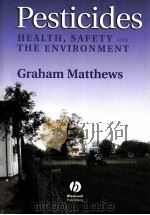《THE SCIENTIFIC BASIS OF HEALTH AND SAFETY REGULATION》
| 作者 | ROBERT W. CRANDALL LESTER B. 编者 |
|---|---|
| 出版 | 未查询到或未知 |
| 参考页数 | 309 |
| 出版时间 | 没有确切时间的资料 目录预览 |
| ISBN号 | 0815716001 — 求助条款 |
| PDF编号 | 811869118(仅供预览,未存储实际文件) |
| 求助格式 | 扫描PDF(若分多册发行,每次仅能受理1册) |
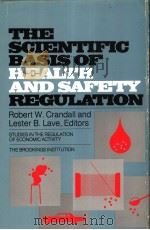
Introduction and Summary1
Scientific Issues Underlying Regulation3
Coping with Scientific Uncertainty3
Institutional Restraints on Rational Decisionmaking5
The Case Studies6
Lessons from the Case Studies13
Conclusion16
PART ONE: PASSIVE RESTRAINTS19
A Scientist's View21
The Effectiveness of Passive Restraint Systems22
Potential Effectiveness of Lap-Shoulder Belts24
Analyses of Fatalities26
Analyses of Fatal and Serious Injury Cases27
Data on Crash Severity28
An Analogy30
Problems with the Data30
Conclusions33
An Economist's View37
Social Welfare and Individual Behavior38
Financial Incentives versus Standards39
The Effectiveness and Social Benefits of Mandatory Passive Restraints40
The Value of Safety Gained and the Costs of Safety Policy47
Toward Improved Highway Safety Policy51
A Regulator's View53
The Legal Basis for the Standard53
The Scientific Basis for the Standard54
Reviews of the Standard57
Evaluation of Automatic Crash Protection61
The Economics of Automatic Crash Protection64
Conclusions66
PART TWO: COTTON DUST69
A Scientist's View71
Epidemiology72
Clinical Signs and Symptoms81
Pathology83
Pathogenesis84
Treatment89
Prevention90
An Economist's View93
Byssinosis94
The Cotton Dust Standard96
Cost-Effective Alternatives102
Costs and Benefits104
Conclusion108
A Regulator's View109
The Occupational Safety and Health Act of 1970109
History of Cotton Dust Regulation110
Medical Evidence111
Feasibility Consideration112
Permissible Exposure Limit113
Summary114
PART THREE: SACCHARIN115
A Scientist's View117
Risk and Saccharin Consumption119
Regulatory Policy and Health127
An Economist's View131
The Saccharin Dilemma132
Approaches to Food Safety Policy134
The Decision Process Approach142
Conclusion150
A Regulator's View153
Facts That Influence Food Safety Decisions154
A History of the Food and Drug Administration's Regulation of Saccharin156
The Legal Framework for Food Additive Regulation161
The Saccharin Decision166
Consequences of Changing the Current Food Safety System168
PART FOUR: WATERBORNE CARCINOGENS171
A Scientist's View173
Organics in Drinking Water175
Carcinogenic Risk Evaluation from Animal Data176
Carcinogenic Risk Evaluation from Epidemiological Data183
Estimating the Carcinogenic Risks in Drinking Water191
Suggestions for Further Research195
An Economist's View197
Background199
Benefits of Removing Organic Contaminants from Drinking Water203
Costs of Removing Organic Contaminants from Drinking Water with Granular Activated Carbon216
Evaluating Benefits and Costs218
Conclusion223
A Regulator's View229
Evidence of Risks232
Risk Extrapolation233
The Trihalomethane Regulation238
Appendix: Net Benefits of Several Trihalomethane Levels243
PART FIVE: SULFUR DIOXIDE251
A Scientist's View253
Caveats and Questions254
Short-Term Effects257
Long-Term Effects259
Sulfates265
An Economist's View267
Making Estimates and Using Data270
The Effects of Sulfur Dioxide271
The Effects of Sulfates272
The Quantitative Relationship of the Sulfur Dioxide to Health273
A Cost-Benefit Analysis of Sulfur Abatement275
A Regulator's View279
Clear Air Legislation280
Air Quality Standards281
Effects of Air Pollution285
PART SIX: GENERAL COMMENTS289
David S. Potter290
Marvin Schneiderman297
Conference Participants301
Index303
《THE SCIENTIFIC BASIS OF HEALTH AND SAFETY REGULATION》由于是年代较久的资料都绝版了,几乎不可能购买到实物。如果大家为了学习确实需要,可向博主求助其电子版PDF文件。对合法合规的求助,我会当即受理并将下载地址发送给你。
高度相关资料
-
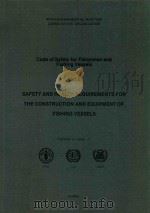
- Safety and Health Requirements for the Construction and Equipment of Fishing Vessels
- Inter-Governmental Maritime Consultative Organization
-

- THE SCIENTIFIC BASIS OF EVOLUTION
- FABER AND FABER LIMITED
-

- THE SOCIAL BASIS OF SCIENTIFIC DISCOVERIES
- 1981 CAMBRIDGE UNIVERSITY PRESS
-
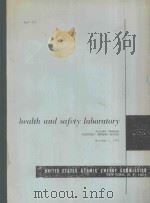
- HEALTH AND SAFETY LABORATORY
- 1972 FALLOUT PROGRAM QUARTERLY SUMMARY REPORT
-

- THE SCIENTIFIC BASIS OF MEDICINE ANNUAL REVIEWS
- 1964 THE ATHLONE PRESS
-
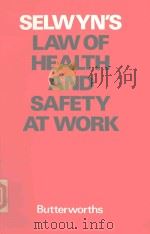
- LAW OF HEALTH AND SAFETY AT WORK
- 1982 BUTTERWORTHS
-
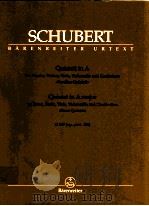
- Quintet in A major for Piano violin viola Violoncello and double Bass Trout Quint D 667 (op.post.114
- 1975 Barenreiter
-
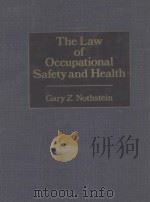
- THE LAW OF OCCUPATIONAL SAFETY AND HEALTH
- 1981 THE FREE PRESS
-

- Law of Health and Safety at Work
- 1997 Sweet & Maxwell
-

- THE SCIENTIFIC BASIS OF FLOCCULATION
- 1978 SIJTHOFF & NOORDHOFF
-

- THE SCIENTIFIC BASIS OF FIOTATION
- 1984 MARTINUS NIJHOFF PUBLISHERS
-

- THE SCIENTIFIC BASIS OF ROAD DESIGN
- 1954 EDWARD ARNOLD LTD.
-
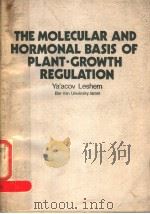
- THE MOLECULAR AND HORMONAL BASIS OF PLANT-GROWTH REGULATION
- 1973 PERGAMON PRESS
提示:百度云已更名为百度网盘(百度盘),天翼云盘、微盘下载地址……暂未提供。➥ PDF文字可复制化或转WORD

